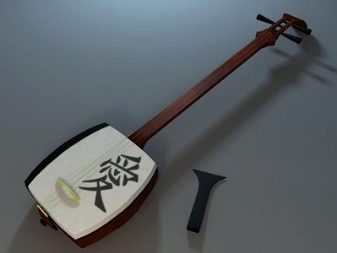Japanese musical instruments
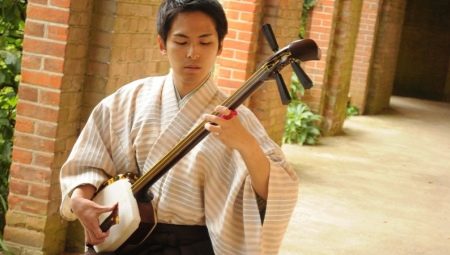
The formation of traditional music in Japan was influenced by the art of China, Korea and some other Asian countries. But those initial musical forms that were in the country before the penetration of neighboring traditions into its culture are already difficult to hear.
The Japanese musical tradition is thus a synthesis of all the influential directions that it has taken. There is a certain synergy that may seem very interesting to a Western listener. And instruments that have become a national treasure will be no less interesting.
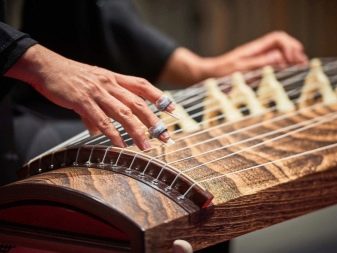
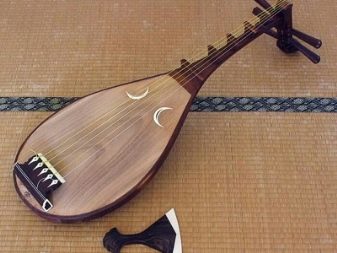
Peculiarities
The progenitors of Japanese musical instruments were brought to the country from China and Korea, and this happened in the VIII century. Today, if you look at these instruments, you can see similarities with some Western and other Asian designs. But the similarity is rather external, but sound extraction definitely has its own characteristics.
In general, the history of the development of music in Japan has several stages, differing in character, dynamics, and the influence of other cultures. For example, during the Jomon period, there was an ocarina and a stone whistle, and ceramic vessels during this time could be used as percussion vessels. Then the Japanese society consisted of fishermen, hunters and gatherers, who in the spiritual life were guided by magic. And this was reflected in the nature of the music and the instruments on which it was extracted. Music was part of magical rituals.
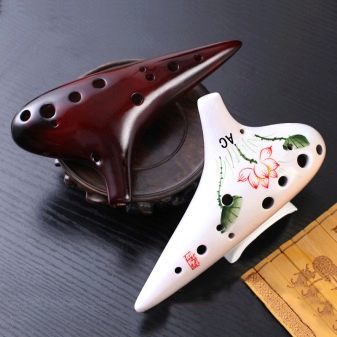

During the Yayoi period, music was the accompaniment of funeral rites, as well as some agricultural rituals. In 710, a gagakuryo service was formed at the imperial court - it was also responsible for introducing the nobility to musical culture, referring to the experience of the leading medieval states.In the future, there were many events, borrowings, interweaving of cultures and technologies.
After World War II, the Japanese League of Contemporary Composers was restored, orchestras and opera troupes appeared, colleges and music schools were opened. In the 50s of the last century, the first electronic music studio appeared. Today, there is a certain confrontation between Western and traditional trends in musical culture, but it cannot be called acute.
And the national instruments did not become purely museum specimens: all the more so as the interest in them from the Europeans seems to be only growing.
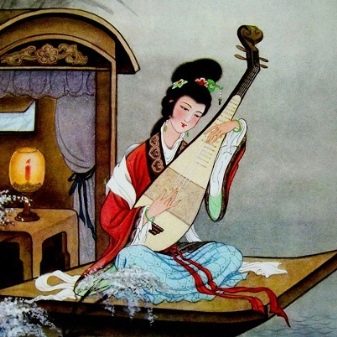

Species overview
What are these tools? In some ways they are very similar to European ones, but in some respects they are completely amazing (it is not clear how this was invented, and how to use it). But the division into types is standard.
Drums
The first example that may be familiar to a person of another culture from Japanese films is daiko. This is how all drums are called in Japan. And these instruments also bear traces of the Korean and Chinese musical migration that happened around the 3rd-4th centuries. The daiko frame is made of wood, covered with leather on both sides. The sizes are very different: from very small to those in which several musicians have to drum at once.
The options are:
- shime-daiko - the sound is adjusted with special screws;
- bedayko - the design does not make it possible to change the sound.
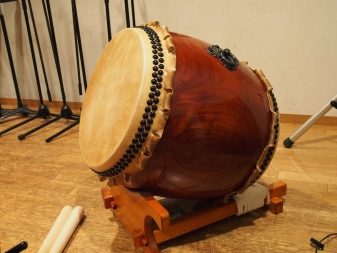

Usually daiko is used in the classics, although sometimes it is used in marches and all kinds of performances. This is the sound of increased discipline, coordination, it also affects psychological concentration. Another variation of the Russian sound of the instrument is taiko.
But the tsudzumi drum looks like an hourglass, it is presented in two varieties: the smaller one - kotsuzumi and the larger one - otsudzumi. Both instruments were used in theater performances. Kotsuzumi must be held on the shoulder, and with the right, while playing, the musician changes the pitch by squeezing the ribbons. Otsuzumi is supposed to be held on the left hip.


Another popular percussion instrument is the sample block, which is an attribute of the Buddhist cult. It reaches 16 cm, rounded in shape, slightly elongated. The product is hollow, with a deep cut. It is customary to play this instrument with sticks and hammers, usually 4 or 5 instruments. They are selected by sound and are attached to a special holder. The sound of the sample block is clattering, deep.

Wind instruments
- A beautiful original instrument from this group is the shakuhachi. The Japanese borrowed the bamboo pipe from the Chinese, but it became a truly folk instrument. Shakuhachi sounds are simple and laconic, they promote meditation, relaxation.
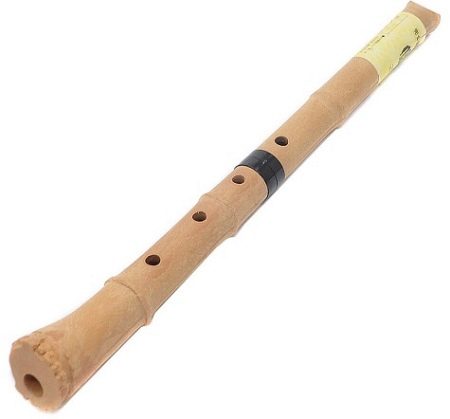
- But the chitirik is another common wind instrument. - very much like a miniature flute. It is made of wood, or rather, of bamboo, which is the basis of chitirik. But the bark of a cherry tree can decorate the base. There is only an octave in the sound range, the sound is extracted from the holes.
The chitirik has a ring, thanks to which you can change the key.
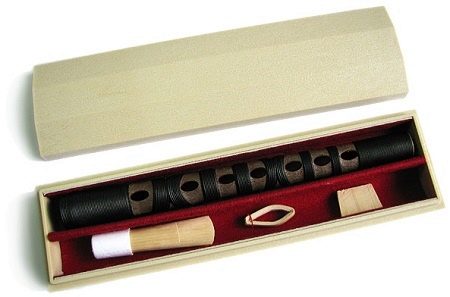
- Another instrument that can be called a kind of flute is sho. This is the name for a bunch of narrow bamboo tubes, of which there are exactly 17. The instrument has reeds, and this makes it possible to take chords of six notes (but 6 is the maximum).

- Even more exotic can be called a horagay made from a clam shell. At this very shell, a narrow tip was cut off, and then a mouthpiece was attached to the product (in extreme cases, its likeness). It was used mainly for religious purposes.

Strings
The most famous of all traditional Japanese instruments is without a doubt the shamisen. It is distinguished by a wide timbre range. The body of the tool is represented by a wooden frame, covered with the skin as tight as possible. 3 strings stretch from the body to the neck of the shamisen, they must be touched with a large plectrum. Initially, the strings were played with a small pick, but then the technique changed.
It is very interesting to vary the timbre of the shamisen by changing the strings, neck, plectrum. There are about two dozen types of this instrument alone. The length is the same for everyone, but the rest can differ significantly, because the difference in registers in magnitude of an octave is absolutely real. Sometimes the shamisen was used (and is still used today) as a musical background accompanying the reciter.


There are other representatives of the strings.
- Sanshin - used to perform folk music in Okinawa. He is considered the prototype of the shamisen. Its body is wrapped around the skin of a snake, and the strings should be touched with a pick worn on the index finger.
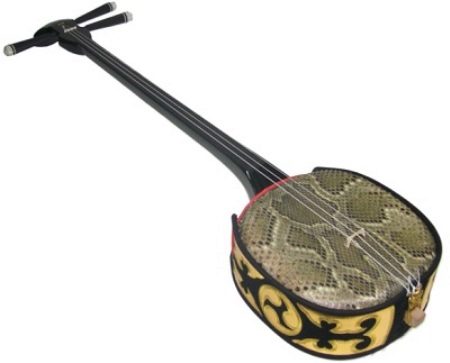
- Biwa is also a very beautiful instrument, about a meter long. His playing adorns ritual ceremonies, but you can even play modern hits on it, it turns out bewitching. Even more surprising is the fact that the instrument appeared 13 centuries ago, but modern people also like to listen to it. Its frame is made of mulberry tree, it takes on an almond shape. And the biva's strings are silk, and the plectrum picks them up. The types of this instrument are numerous: for example, the gakubiva has 4 strings, it creates a gagaku, especially the sound. And the mosobiva, also equipped with 4 strings, was the instrument of the blind monks.
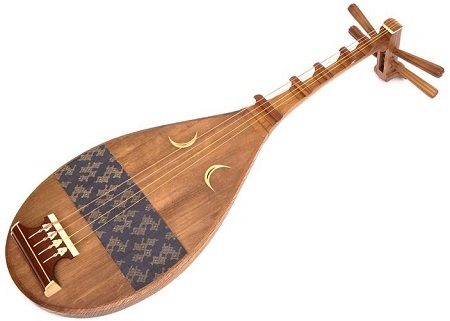
- The koto is a plucked instrument often referred to as the Japanese zither. Its peculiarity is that you have to play on it with special nails-picks (overlays). They are worn on three fingers. But the keys and frets are tuned before playing, with string bridge-stands.

- Mukkuri is the name of the bamboo jew's harp, the sounds of which are emitted when the player shakes the tongue with a thread. The sound can be strong, loud, aggressive. The tool must be pressed to the lips, you can even grab it with your teeth.
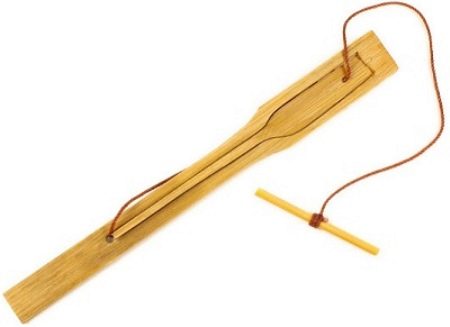
- Kokyu - or something like a Japanese violin, is also a very famous bowed instrument. In length it reaches 70 cm, and the bow is larger - up to 120 cm. The body is covered in front of the cat, and the back - in dog skin. The bow is made from horsehair. When playing, the kokyu should be held vertically, it should rest on the knees, sometimes just held in front of you.
The list of incredible national instruments does not end there, but the aforementioned examples are the most famous heritage in the country's music.

Use in contemporary music
Japan is a different world, and in music too. There are global trends, and there are own styles that are not similar to anything else. In the mid-60s, there was a surge of interest in Japanese music in the West: American composer John Cage flew to Tokyo (with Yoko Ono, by the way) to give several performances. And this was the beginning of a new stage of cultural exchange. Western musicians were impressed by the national flavor of Japanese music, visited temples, listened to such exotic instruments as taiko, shamisen, koto, and, as best they could, popularized this music.
Today, Japanese music in the world is known primarily for such genres as j-pop, j-rock and visual kei. Once in the country, all Western music was called kayokyoku, but then the genres began to split up, mix. Now, for convenience, pop and rock are referred to as j-pop, Japanese music is a separate category, and another category is enka (ballad) and classics.
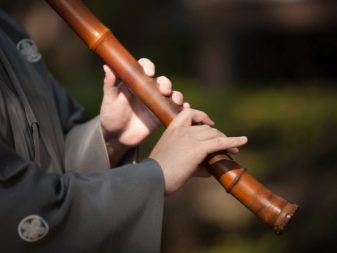

In general, we can say that today's music in Japan, aimed at the general audience, has moved away from the traditions of pentatonic scale. How traditional methods and moves have disappeared into the shadows. But national instruments, authentic, vibrant, distinguishing the Japanese style, still sound. For example, shamisen is used wherever it is necessary to enhance the national flavor - in anime and Japanese films. It can be compared to the Russian balalaika, which also evokes strong associations with the country's folk culture.
Musical ensembles made up of drummers are practically a brand in Japan. Such music is listened to live, because it really creates a kind of thread between the performer and the listener, allowing the latter to experience strong emotions.
Concerts where music is performed on national instruments are held in philharmonic societies and large educational institutions. For modern Japan, this is not only a tribute to tradition, but a part of the present day, a touch of authenticity necessary for a Japanese.

